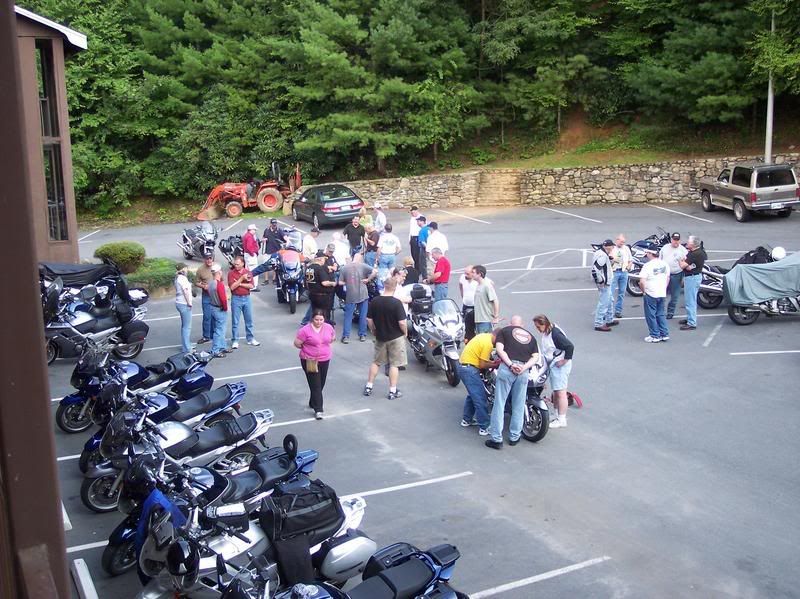The original e-mail of this situation was passed on to me by Jeff Atkison of Sport-Bike Effects. I had ordered through him a set of brake lines for my 07' but found out there were significant differences in the set that, at the time, was available from Galfer from what is on the Gen 1 models. Neither Jeff or Galfer were aware of the different configuarations. Jeff has been nothing but perfect in his responses to me regarding the problem and was the point man that started Galfer in development of the different line set for the Gen 2 bikes. Some of you may recall that he was soliciting a volunteer in the LA area for development of a new set of lines.
This ins't a plug for Sport Bike Effects but if customer service is important to you, I don't think you'll find anybody better than Jeff!
My response to Jeff about the situation where there was an initial hard brake application followed by an immediate release and a quick subsequent hard application was tested by myself, albiet in non controlled normal road testing. However, the report of the bike with the new line set and my bike were, in my opinion, virtually the same.
My first test was just a normal but somewhat hard brake application from about 45mph, straight ahead, with the clutch pulled in and no brake application to the rear/linked set via the foot pedal. Braking response was, as usual, predictable and normal, although undetectable the antiskid system was probably somewhat active, the bike was decellerated to approximately 15mph. Another test was run almost in the same conditions but with an even harder brake application to where antiskid activation was readily apparent but not excessive. Again braking response was, as usual, predictable and normal, the bike was decellerated to approximately 15mph and in my opinion very good brake performance.
The next test was in line with what Galfer wanted to be tested; hard brake application, imediate release, and a secondary quick hard application, in an attempt to recreate the snenario described that produced the area of concern. The test situation was very close to the first test conditions, the brakes were applied very hard and there was detectable activation of the antiskid system, the brakes were completely released and quickly re-applied, again very hard to the point where there was detectable activation of the antiskid system. In the subsequent secondary brake application there was a greater sensitivity through the brake lever and the activation of the antiskid system was somewhat more abrupt, although noticable it was in no way an uncomfortable response. This test series was repeated and the results were virtually the same.
Plus it was kind of fun and good practice!
From what I could summize was that the antiskid system has a limited volume capacity to activate the release and re appliction of the brakes at the high frequency response it is performing under. In that as the system gets used more through the brake application the performance loses some resolution and sensitivity. In the test where there was a hard brake application, imediate release, and a secondary hard application the system simply did not have enough time to regenerate as it was during the initial application.
With that concept in my little pin head, I thought up another senario that could possibly produce the same outcome. Here in Salt Lake the roads will crack in the winter from freezing (from all the damn salt applied) and are repaired with a stream of tar over said crack. When it is very hot out, the tar is rather gooey and traction and tire performance is rather variable, actually it sucks when you are doing any thing other that straight and level.
I found a strip of road where there was a lot tar repair on most of the surface in random areas. I did another test this time beginning at approximately 65mph, straight ahead, with the clutch pulled in and no brake application to the rear/linked set via the foot pedal. The brakes were applied very hard and there was detectable activation of the antiskid system (especially over the tar strips) as the bike continued to decellerate with continued activation of the antiskid system, the performance had the same response as the test with the "hard-off-hard" situation. In that as the brake application continued with repeated antiskid activation there was a greater sensitivity through the brake lever and the activation of the antiskid system was somewhat more abrupt.
From what I can tell this is the "nature of the beast", and I do not feel that any change in brake line resiliancy would have any effect on the peformance of the antiskid system. I can't believe that Yamaha would produce a system if it was tied to that kind of design requirements, if that were the case just a miniscule amount of entrapped air in the system would have the same problem.
I am hopefully at the front of the line for a new set of brake lines from Galfer. Once installed I will retest and report what, if any, differences there may be.
Hope this helps........




